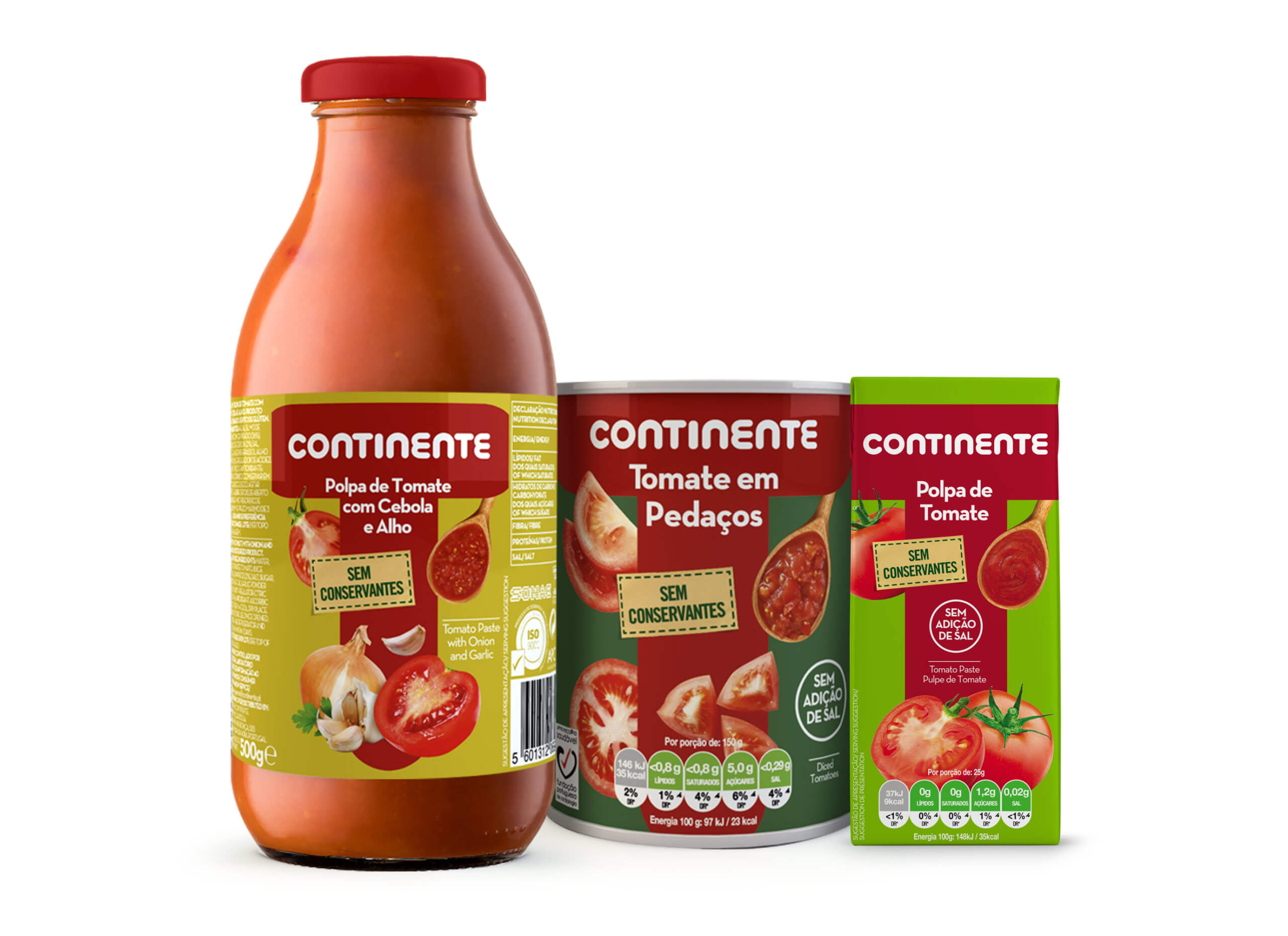Continente cuts 1,185 tonnes of sugar and salt
In the context of World Obesity Day, Continente announces the results of nutritional optimization plans in more than 350 private label products, with annual reductions of 800 tonnes of sugar, 120 tonnes of salt and 385 tonnes of saturated fats. The brand also eliminated palm oil from 80 of its products.
These reductions are focused on Continente products, in particular yoghurts, cereals, cookies, soft drinks, crisps, tomato pulps and take-away soups, thus contributing to improving the health and lifestyle of the Portuguese. Among other examples, canned pulses guarantee a low salt content (less than 0.3g of salt per 100g of product) and tomato pulps do not have any added salt.
By the end of 2022, it is estimated a salt content reduction, of around 4 tonnes, in Continente soups, a 12% reduction in the salt content in crisps and snacks and a 10% reduction in the sugar content in yoghurts and chocolate milks.
For Mayumi Delgado, responsible for Continente’s Nutrition team, “these are important reductions that Continente has been making, with the Portuguese’s health in mind, helping to prevent obesity, but also associated diseases, such as cardiovascular diseases, type 2 diabetes, and many others. Two out of three Portuguese are overweight or obese and the problem has worsened with the pandemic. Thus, Continente’s nutrition team has accelerated nutritional optimization, in order to help reverse this situation”.
“These reductions are gradual so as not to impact the taste of the products, which we guarantee by performing sensory tests with consumers, who test and evaluate the new products”, says the head of Continente’s Nutrition team.
At the same time, Continente is betting on the ‘Nutritional Traffic Light’ on the front of packages, so that consumers have access to simplified information about the products, especially about nutrients that, in excess, can be a serious health problem. Through a colour code, the ‘Nutritional Traffic Light’ shows the sugar, salt, fats and saturated fats concentration (green – low, yellow – moderate and red – high). An essential tip for balanced choices is to opt more often for more green or yellow and less for ‘red lights’.

These reductions are focused on Continente products, in particular yoghurts, cereals, cookies, soft drinks, crisps, tomato pulps and take-away soups, thus contributing to improving the health and lifestyle of the Portuguese. Among other examples, canned pulses guarantee a low salt content (less than 0.3g of salt per 100g of product) and tomato pulps do not have any added salt.
By the end of 2022, it is estimated a salt content reduction, of around 4 tonnes, in Continente soups, a 12% reduction in the salt content in crisps and snacks and a 10% reduction in the sugar content in yoghurts and chocolate milks.
For Mayumi Delgado, responsible for Continente’s Nutrition team, “these are important reductions that Continente has been making, with the Portuguese’s health in mind, helping to prevent obesity, but also associated diseases, such as cardiovascular diseases, type 2 diabetes, and many others. Two out of three Portuguese are overweight or obese and the problem has worsened with the pandemic. Thus, Continente’s nutrition team has accelerated nutritional optimization, in order to help reverse this situation”.
“These reductions are gradual so as not to impact the taste of the products, which we guarantee by performing sensory tests with consumers, who test and evaluate the new products”, says the head of Continente’s Nutrition team.
At the same time, Continente is betting on the ‘Nutritional Traffic Light’ on the front of packages, so that consumers have access to simplified information about the products, especially about nutrients that, in excess, can be a serious health problem. Through a colour code, the ‘Nutritional Traffic Light’ shows the sugar, salt, fats and saturated fats concentration (green – low, yellow – moderate and red – high). An essential tip for balanced choices is to opt more often for more green or yellow and less for ‘red lights’.

